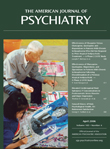“Dr. Hill, are we changing my medicine because they gave you a pen?”
Iwas moments away from offering an explanation of drug half-lives when my patient’s eyes brightened and she asked the question that jolted me. This 47-year-old psychopharmacology clinic patient at times seemed slow to follow the logic of our treatment plan, but this question about her antianxiety medication came swiftly. My cheeks and forehead were suddenly awash with warmth as I looked down and saw my pen did indeed announce the availability of a popular benzodiazepine in a new formulation. At that moment I felt bought and paid for.
My stance on the influence of drug lunches changed over the course of my psychiatry residency. At the beginning, I thought I could slide a pen into my pocket or grab a few slices of pizza without my behavior being affected. So did most of my colleagues, who eagerly engaged in small talk with drug representatives (“reps”) in order to claim another mug or pocket pharmacopoeia. We wondered when the reps who brought the tasty pad thai would be back, joking that we could not recall the company for which they worked. However, some of my fellow residents refused to eat the free drug company lunch right from the start. I scoffed at them, for I thought I could save a few bucks on lunch and still choose medications for my patients in an unbiased manner.
A wealth of research has shown my initial response to the free lunches was typical for many doctors
(1,
2) . I drew a flexible line between reasonable gifts—pens, simple lunches of sandwiches or pizza—and those gifts I thought too extravagant to accept—dinners at the most expensive restaurants in town. I was amazed at the number of brightly colored invitations to listen to an expert extol the merits of new drugs over dinner at restaurants I could not afford on my resident’s salary. While it was difficult to pass up five-star dinners, I was comfortable with my self-imposed standard for the first 3 years of my residency. I did notice, however, that each time events were held at a fancy French restaurant written up in the paper, the lectures seemed especially pertinent to me.
My position on drug companies and their gifts continued to evolve during my fourth year of residency. I recalled the uncomfortable feelings caused by patients like my psychopharmacology clinic attendee, and with a little more free time on my hands in my final year of training, I decided to read about the pharmaceutical industry’s influence on medicine. Even gifts of negligible value can alter the behavior of doctors in ways we are not always aware
(3) . And while peer-reviewed research studies can make a strong impact upon the way we as doctors practice medicine, and drug companies have collaborated with psychiatric investigators on some important studies, implementing a study’s findings is a matter of choice. Although listening to descriptions of recent studies while sipping hot coffee brought into the clinic by drug representatives is more convenient than reading journals on your own, one consequence may be that too large a fraction of one’s knowledge of new research and its application to practice is heavily filtered and arguably biased.
With my residency training at Brigham and Women’s Hospital now completed, I reflect upon the array of topics I have learned, from psychodynamic psychotherapy to opioid detoxification. Few, however, are as complex as the issue of drug company influence on training and practice. As a result of my experiences, my pens are no longer emblazoned with the latest medications, and I bring my lunch from home.
But my eyes still do linger on the pad thai.

